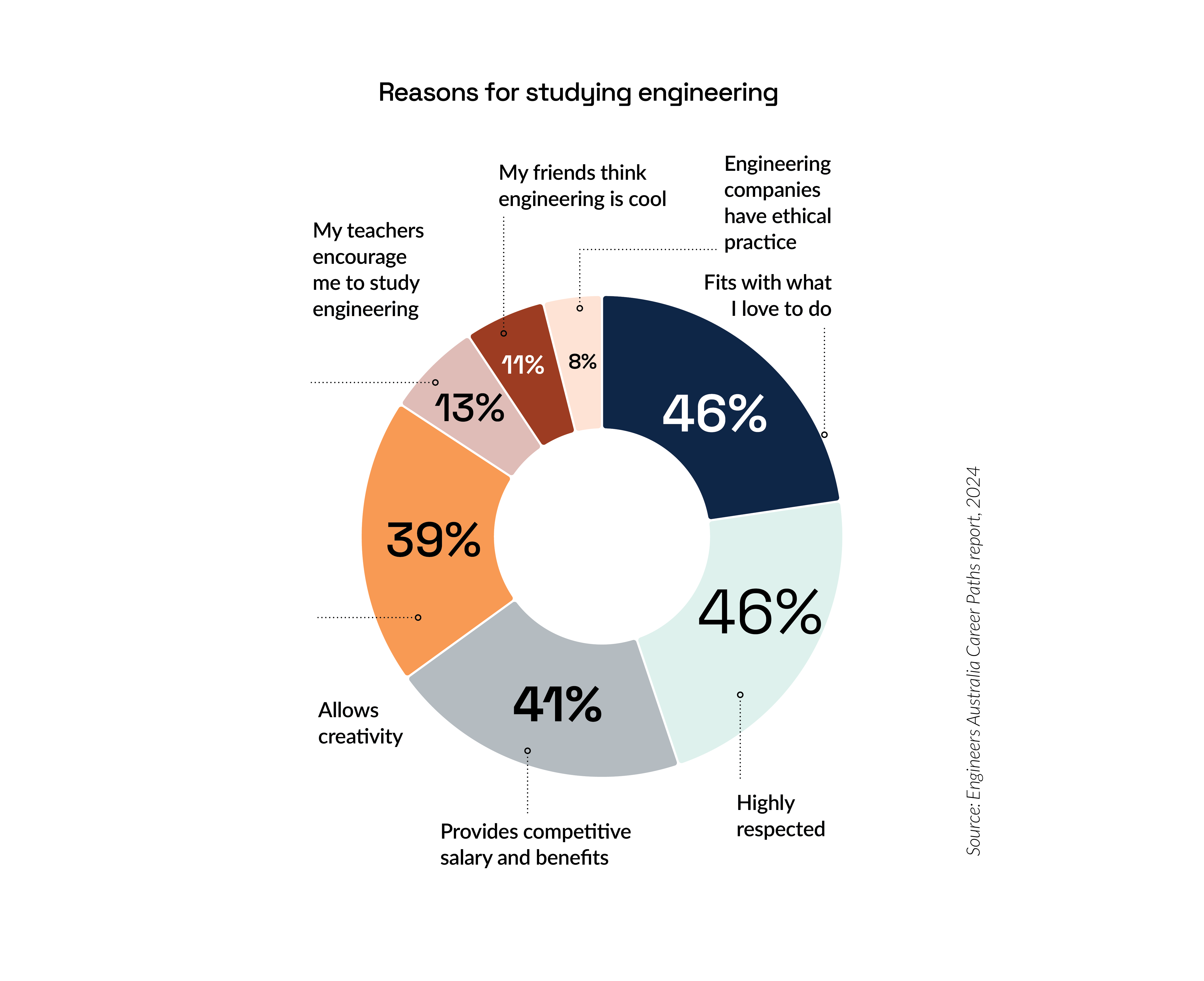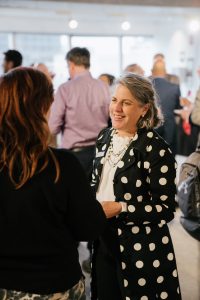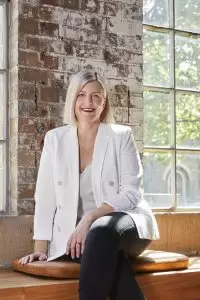High-school students are regarded as the most environmentally conscious generation, but declining rates of engineering education are cause for concern.
This article was originally published in the November 2024 issue of create with the headline “Next-gen engineering”.
There are few, if any, professions more central to decarbonising our society and building its resilience to climate change than engineering. At the same time, movements such as the global school strikes for climate change show the deep environmental consciousness of generation Z, who comprise the current crop of high school and university students, and recent graduates.
And yet, any observer confident that these two facts would lead to soaring interest from school-leavers in engineering would find themselves disappointed.
In fact, the uptake of STEM subjects is decreasing in the later secondary years, while enrolments in engineering at a tertiary level have plateaued.

“Over the last 10 years, the numbers of domestic engineering graduates have not grown, and the pipeline is weakening,” said Alexandra Sparvell, General Manager Engineering Talent at Engineers Australia.
Research conducted by Student Edge for Engineers Australia surveyed high-school students and their parents about career plans and attitudes, and revealed engineering’s image problem, particularly among girls.
Engineering was ranked as the fourth most popular field of study, with male students (31 per cent) much more likely than female students (11 per cent) to want to pursue it at university. Female students (27 per cent) were more inclined towards medical and health sciences degrees.
The study noted that boys were driven by an interest in STEM and building and construction, whereas the career aspirations of women were driven by creativity and the provision of public services.
The most common reason cited for not choosing engineering was lack of awareness of what engineering is and what engineers do. Engineers Australia’s Career Drivers research found engineering is generally perceived positively for its societal impact, but fields such as health care and education have a more established association with community benefits.
The paradox that many students haven’t connected their desire to change the world for the better with engineering – particularly among women and other underrepresented groups – requires a cut-through message that engineering is a profession that’s creative and social as well as technical.

The heart of the matter
“It’s a career for problem-solvers,” Sparvell said. “If you look ahead to things like the energy transition, the impacts of climate change, advanced manufacturing and the global economy, these all give rise to complex problems to be solved.
“Research shows a clear link between diversity, innovation and problem-solving, so opening the profession to a more diverse range of students who may not have considered engineering will help solve the challenging problems ahead.”
The task of effectively engaging young people involves communicating the industry’s competitive salaries and healthy work-life balance, as well as the positive societal impacts of engineering.
Emphasising its inter-connectedness with other industries – for instance, how hospitals function effectively due to advanced engineering, or how health sciences benefit from cutting-edge technology – speaks to problem-solving, collaboration and creativity.
“Showcasing engineering through stories and role models challenging bias will help students make an engineering career decision,” Sparvell said.
Poor numbers
But even with enhanced engagement, Australia’s declining rates of maths education are cause for concern. Fewer students are studying maths in years 11 and 12 and Australia’s overall maths standards are declining, as revealed by metrics including NAPLAN and the 2023 Programme for International Student Assessment.

Engineers Australia CEO Romilly Madew AO FTSE HonFIEAust EngExec has described the maths crisis as “a ticking time bomb for Australia, hindering our capacity to innovate and compete globally”.
A deficit in maths educators equates to a deficit in engineering talent, she said. “[It is] a mathematical equation with profound implications for Australia’s future prosperity.”
Currently, 45 per cent of high school maths teachers do not have specialist maths training. Engineers Australia’s goal is for teachers to be subject-matter qualified and have a strong awareness of real-world applications of maths.
“We want teachers who instil confidence in mathematical concepts in students,” Madew said. “If primary school students exit with adequate maths literacy, the transition to secondary maths subjects becomes less daunting.”
Building student capability through education outreach, particularly in maths, is a critical activity. Additionally, its engineering-based education outreach provides inspiring curriculum-based learning experiences while demonstrating the local impact of engineering.
Engineering influence
Increasing the number and diversity of STEM-trained teachers is a key recommendation of the Pathway to Diversity in STEM Review.
“They’re the original influencers for children,” said panel chair and Cicada Innovations Chief Executive Sally-Ann Williams.
Released in February, the review details 11 recommendations for increasing the diversity of STEM professionals through implementing structural and cultural change in Australia’s STEM system. They include creating accessible pathways for diverse people to engage in STEM learning (at all stages and ages) and improving the Australian curriculum through future reviews.
It also highlights the need for a government-developed and led communication and outreach strategy emphasising the opportunities and potential for careers in STEM.
The rationale, the report says, is to drive home an important message: “STEM jobs can be creative and caring. They have the potential to change people’s lives – such as finding ways to increase food security, or creative ways to help wildlife conservation and address climate change.”

Linking the conversation and narratives in high school about STEM to career outcomes is important, Williams told create.
“We still miss that step, but it’s easily done – you can link the curriculum in a physics, engineering or maths class with a real-world example of how that learning might be applied.”
Although the narrative about pathways is changing thanks to the emergence of new engineering disciplines, the fundamentals of the core curriculum remain unchanged.
“Mathematics, scientific and engineering principles are foundational and critical skills. The narrative around pathways is the piece that brings them to life. There are a lot of great organisations that do this work – Careers with STEM, for example, which publishes profiles of all sorts of diverse STEM careers, and diverse STEM professionals,” she said.
“So it’s about tapping into those resources and connecting the dots. That’s where, if we get the foundations right, a role model can be an inspiration. But it requires multiple touchpoints over the course of a student’s education for these things to align.”
Well-intentioned but short-term interventions were unlikely to create lasting change, Williams said.
“If you’re looking for long-term transformation you need to embed it in the curriculum, work with teachers to support them with appropriate materials, and provide very clear links and pathways to career opportunities.
“All the literature globally says if you want to encourage young people onto a STEM pathway, you start in primary school. People start making gender-based assumptions in kindergarten, so exposure at a very early age is crucial.”
Williams said there was plenty of noise in the sector around encouraging a diversity of young people into STEM and increasing the visibility of engineering careers, but industry needed to accept its own responsibility for the pipeline problem.
“Everybody wants to fund a program working with kids in schools, but you don’t move the needle unless you fix the system’s drivers. It’s time to hold businesses to account on it and say it’s fabulous you’ve been funding all these not-for-profit initiatives to bring people into the pipeline, but what have you been doing in your workplace to ensure they thrive and stay?”




Dear Larissa, Thank you for your article that contains the statement that one of the problems with declining numbers of students not pursuing engineering studies, is school students not knowing what engineering is about. In this regard I am disappointed that my previous efforts to have Engineers Australia promote to schools 3 booklets I have authored, has not had any progress. This has included bringing this matter to the attention of Engineers Australia CEO Romilly Madew. These books available from website amazon.com.au are titled: –
1. An Outline Of The Civil Engineering Profession. 2. Outlines Of The Mechanical, Electrical and Chemical Engineering Professions. 3. 30 Famous Engineers In History.
Yours Sincerely, Hilton Solyom
“Everybody wants to fund a program working with kids in schools, but you don’t move the needle unless you fix the system’s drivers. It’s time to hold businesses to account on it and say it’s fabulous you’ve been funding all these not-for-profit initiatives to bring people into the pipeline, but what have you been doing in your workplace to ensure they thrive and stay?”
Ouch! Grads are nowadays generally quite raw. We typically have to teach grads the basic principles of what we do, how to write clear, concise technical reports (often starting with how to write basics), map out how to assess and solve problems, use the software we use, all from close to scratch. Usually the first two years is a loss for our business, and maybe half stay long enough to repay that investment in their development. In my experience during the first few years the salary is paying for potential rather than output of profit. So, I reckon business is generally fulfilling its part, and in recent years have to fill increasing basic engineering knowledge, and basic skills (engineering and general) gaps.
I therefore counter this comment with (in addition to the primary and secondary school educators the subject of this article) what has the University Sector and Engineers Australia been doing to ensure graduates are engineering job-ready?
In my experience this has declined markedly over the past 10-20 years, and only now is it gaining some attention, though I am yet to see many effective actions. Come on engineers, problem solve this problem!
Hi Larissa,
An interesting article, which has some profound consequences in terms of how we promote engineering. Given that the percentage of female engineers has remained quite static at around 13% for many years now, despite a lot of promotion, it begs the question as to whether a higher proportion of female engineers is realistic. I was interested to read that the interest in health and health sciences is greater, which is understandable from a maternal perspective.
I, however, take you to task on the pie diagram. When I last did pie diagrams the proportions were meant to add up to 100%. The one you show is way in excess of that. I question whether a pie chart is the way to go for the data that you have.
Great article and research data, which should be used more widely.
Kindest regards, Rex